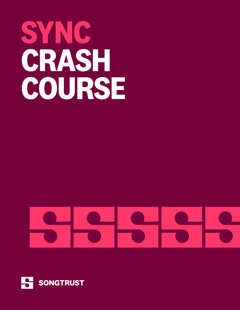If there was ever any doubt about the relative sway of syncs in an on-demand world, one needn’t look any further than the fourth season of “Stranger Things”. Aside from the sudden boost Metallica got from its guitar hero finale — “Master of Puppets” shot up Billboard’s Hot 100 chart for the first time in forever and the band even invited a cast member onstage to celebrate — Kate Bush reportedly earned more than $2.3 million in royalties after the show used her mid-‘80s masterpiece “Running Up That Hill (A Deal With God).”
“I’m overwhelmed by the scale of affection and support the song is receiving,” Bush wrote in an online statement. “It’s all happening really fast, as if it’s being driven along by a kind of elemental force. I have to admit I feel really moved by it all.”
How could she not be? As triumphant as the track is — it’s been covered by everyone from Chromatics to Pub Choir — “Running Up That Hill” didn’t snag the No. 1 spot on Billboard’s Global 200 chart until 2022. This makes it a prime example of how syncs are breathing new life into well-aged music faster than ever before. Or as Rob Jonas — the CEO of Billboard’s data-tracking partner (Luminate) — told Fortune, “While we’ve seen a notable increase in catalog music streams in recent years with an annual 20% growth alone in 2021, the Kate Bush story has taken the phenomenon to a new level.”
So, that begs the question, if you should be considering sync placements for your song(s), what are the different types of sync placements and uses available today? Let’s dig in deeper.
What Is a Sync Placement or Use?
A sync is when a song is licensed and used alongside such moving images as a TV show, film, video game or commercial. Fees are typically flat and paid upfront. Depending on the media that are involved and the terms, this can be an advance based on future royalties. You may also earn performance royalties when sync-related content is broadcast or performed to the public (such as on a TV station or streaming service), as well as mechanical royalties for physical copies or downloads of the TV show or movie.
As a publishing administrator, Songtrust collects these royalties on behalf of our clients and distributes them in quarterly statements. To help put today’s sync licensing scene in perspective, Songtrust now offers a free Sync Crash Course that tackles everything from residual sync royalties to the deals themselves.
What Are the Different Types of Sync Placements?
Type of Placement: Film
Who Licenses: Major studios (Walt Disney, Universal, Warner Bros), up-and-coming film companies (A24, Blumhouse, Annapurna), streaming services (Netflix, Amazon, Hulu), independent filmmakers, and independent producers
A Real-World Example: The best-in-class use of “Bohemian Rhapsody” in “Wayne’s World”, which Mike Myers apparently insisted on. “[Producer Lorne Michaels] was suggesting Guns N' Roses… because at the time, Guns N' Roses had a number one song,” Myers explained in a Rolling Stone interview. “I said, ‘I hear you. I think that’s really smart,’ but I didn’t have any jokes for a Guns N' Roses song. I had lots of jokes for ‘Bohemian Rhapsody.’ It’s just inherently comedic.”
Type of Placement: Television
Who Licenses: Cable (HBO, Discovery Channel, FX) and network (ABC, CBS, Fox) TV channels, streaming services, independent directors, and producers not affiliated with a network or entertainment company
A Real-World Example: “Hello,” a club-ready collab between Dragonette and Martin Solveig, was Tunefind’s top-rated TV discovery in 2021 for its use in the hit Apple TV+ show “Ted Lasso”. You can thank Coach Beard’s dance moves for that one.
Type of Placement: Commercials
Who Licenses: Advertising agencies (Wieden + Kennedy, Droga5, BBDO), music supervisors, independent production companies, and trendsetting brands
A Real-World Example: Fresh off the TV sync success of “It’s a Sin” on HBO Max, the Pet Shop Boys landed a resurgent dance chart hit with its aptly titled single “Opportunities (Let’s Make Lots of Money)” after its use in an Allstate ad.
Type of Placement: Video Games
Who Licenses: Major (Sony, Electronic Arts, Activision/Blizzard) and mid-sized (Riot Games, Rockstar, 2K Sports) studios, independent developers, and mobile game makers (Zynga, Supercell, Rovio)
A Real-World Example: A remixed version of Ariana Grande’s “Touch It” track was featured in the free Final Fantasy game “Brave Exvius”, along with a playable version of the pop star. “After listening to Ariana’s songs,” explained producer Hiroki Fujimoto, “we felt the composition and tempo of ‘Touch It’ would go well with the expansive universe that encompasses ‘Final Fantasy Brave Exvius’. This magnificent song initially starts quietly and builds up towards the end. Ariana’s wonderful voice and the new orchestral arrangement fully express FFBE’s dramatic story and continuously expanding world.”
Type of Placement: Trailers
Who Licenses: Production studios, TV networks, and trailer houses (Buddah Jones, Trailer Park)
A Real-World Example: According to Variety, “slower and moodier new versions of classic songs” are all the rage in trailers these days, from Lana Del Rey’s vapor-trailed version of “Once Upon a Dream” (“Maleficent”) to the Bee Gees’ “I Started a Joke” (“Suicide Squad”). “It’s what I call the old-comfortable-shoe phenomenon,” music supervisor Jonathan McHugh said in the story. “You give people something familiar, like Destiny Child’s ‘Say My Name’ in the new ‘Candyman’, and all of a sudden [viewers are] more engaged in the content and predisposed to enjoy what they’re watching because they love the song.”
What Are the Different Types of Sync Uses?
Type of Use: Background Vocal/Instrumental
How It Works: A song (either an instrumental or featuring lyrics/vocals ) is played in the background of a scene but not featured or performed.
A Real-World Example: Anyone who’s ever seen a soundtrack played on screen has witnessed a typical background vocal/instrumental situation. Rather than single one platinum-plated LP out, here is a Ringer listicle that dares to name and decode the 50 Best Movie Soundtracks of the Past 50 Years.
Type of Use: Visual Vocal/Instrumental/Dance
How It Works: A song (either an instrumental or featuring lyrics/vocals ) is performed, played, or danced to on screen.
A Real-World Example: "Saturday Night Fever” much?
Type of Use: Main Title
How It Works: A song plays over the opening titles/title card of a production.
A Real-World Example: Nothing screams Quentin Tarantino quite like the title sequence of “Pulp Fiction”, easily the most expressive use of a surf guitar ever.
Type of Use: End Credits
How It Works: A song plays over the end credits of the production.
A Real-World Example: While it was never released as a proper single, “Where Is My Mind?” immediately became that Pixies song when it was used in the final explosive moments of “Fight Club”. According to an ABC News report, frontman Black Francis was fielding licensing requests every “eight or nine days” in light of its breakout success.
Type of Use: In-Context / Out-of Context
How It Works: The additional use of a song, in the original context it was licensed for (e.g., a trailer that lifts a song-led sequence directly from the film itself, exactly how it was originally edited) or something entirely different (e.g., a song is licensed for a specific scene in a film and used throughout its trailer alongside other images).
A Real-World Example: The second half of the “Trainspotting” film trailer kicks into high gear alongside Iggy Pop’s iconic “Lust For Life” track, which is used in an even more fitting manner in the movie’s opening sequence.
For more information and insights, sign up for our free Sync Crash Course here.






